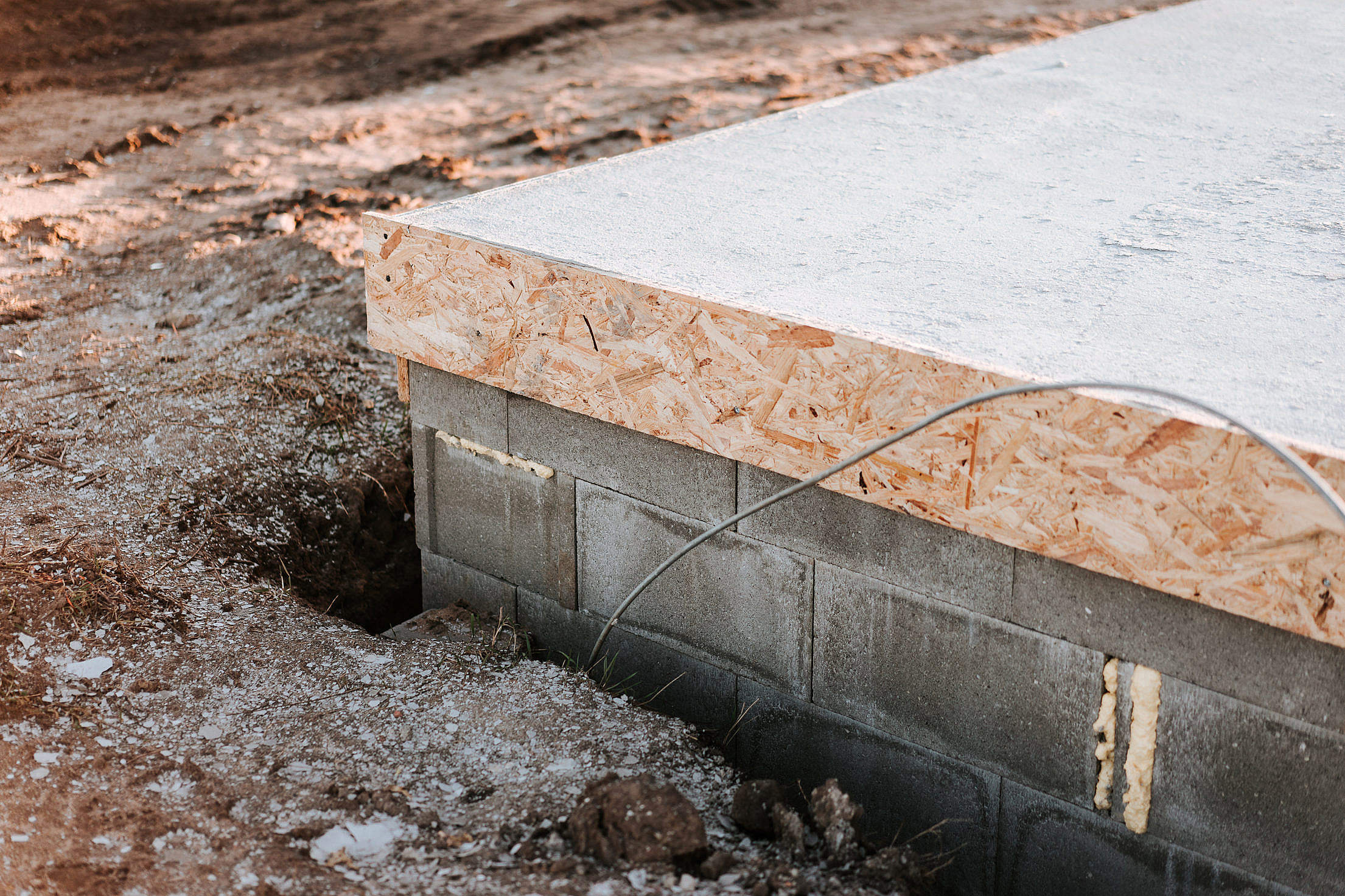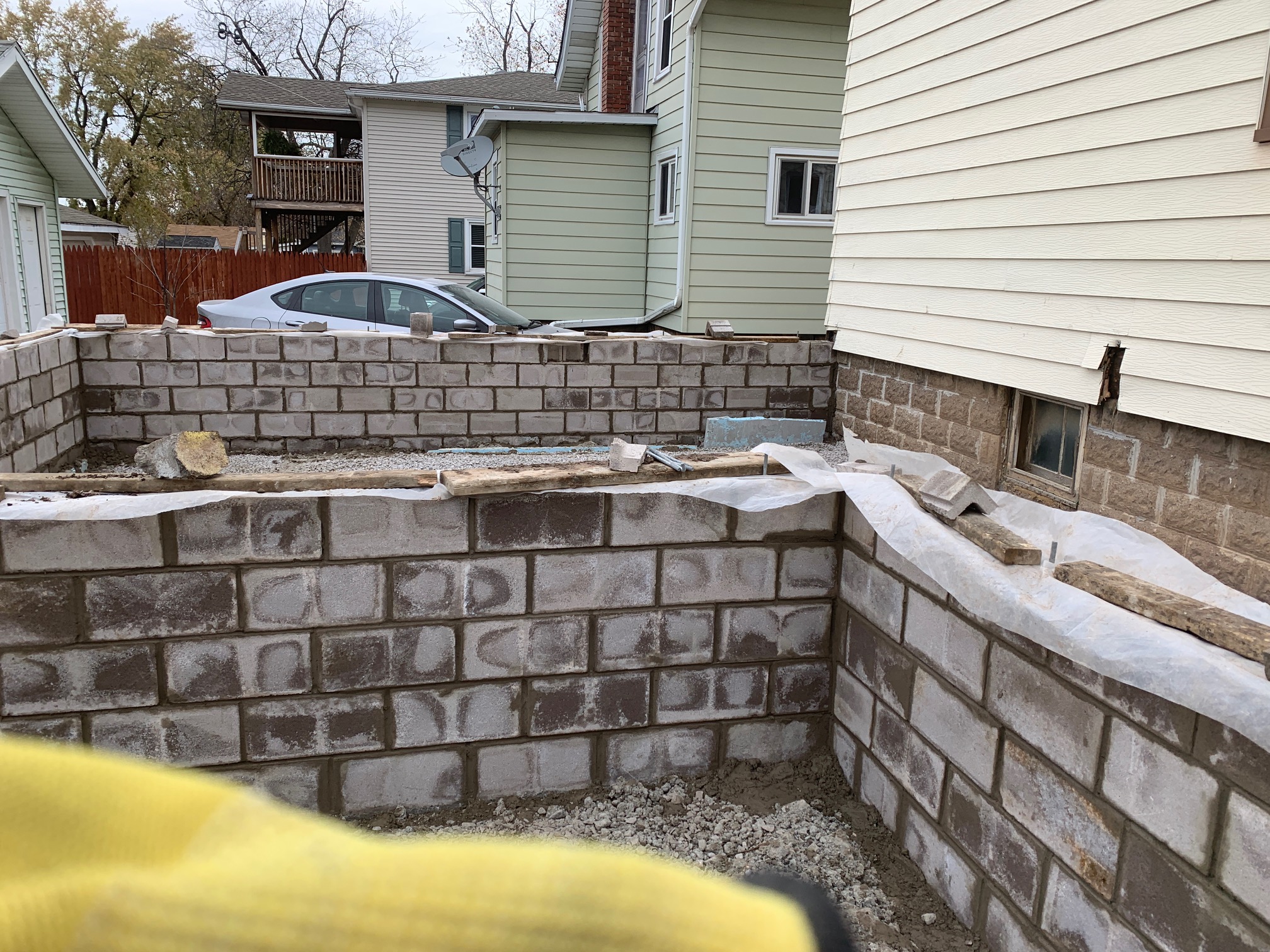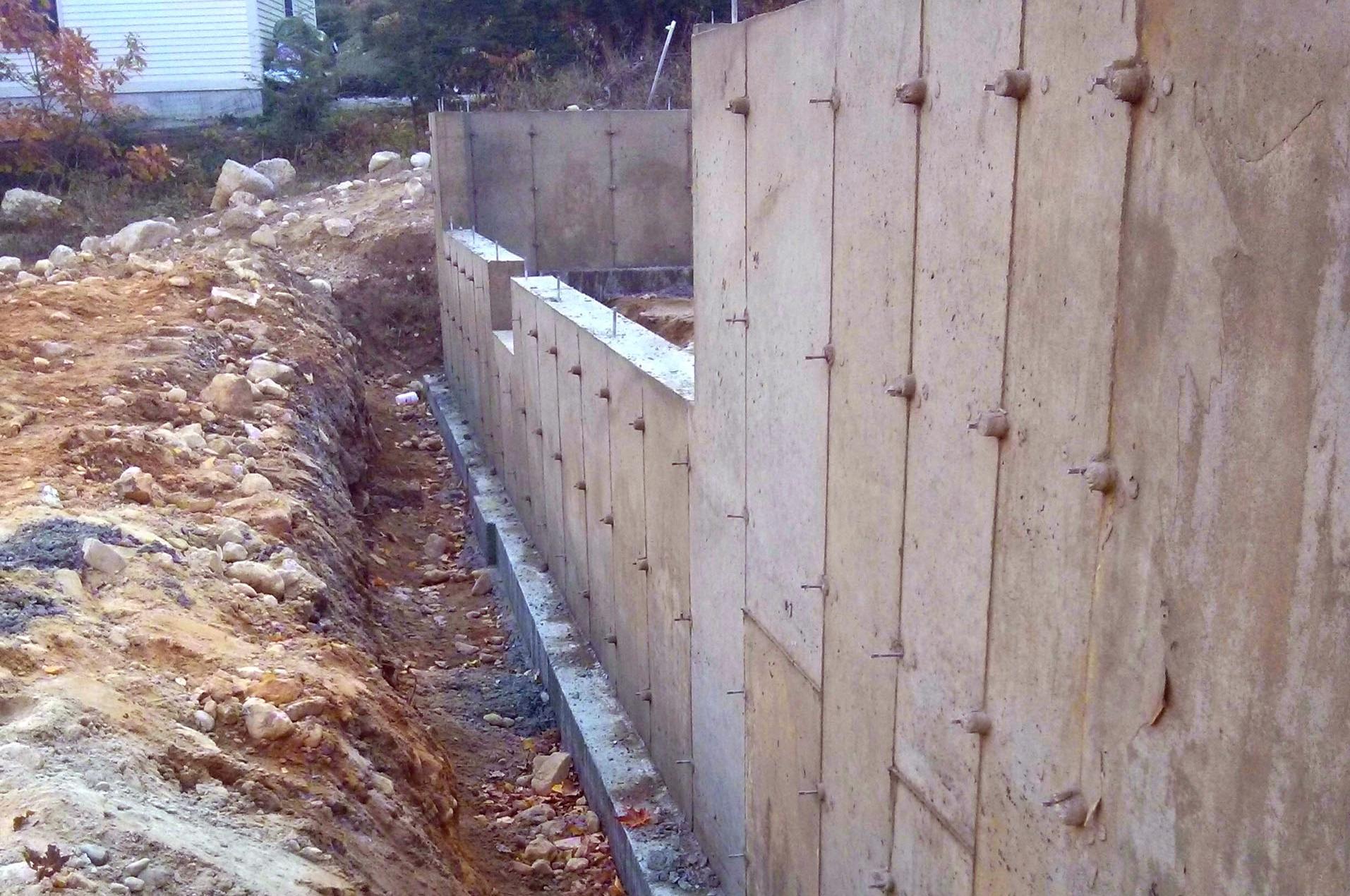
Concrete SlabOnGrade House Foundations Free Stock Photo picjumbo
Concrete masonry is used to construct various foundation wall types, including full basement walls, crawlspace walls, stem walls and piers. Concrete masonry is well suited for below grade applications, because of its strength, durability, economy, and resistance to fire, insects and noise.

Block Foundation Concrete Driveways Stamped Concrete Landscape
Concrete slab or slab-on-grade foundations are solid concrete foundations that rest on the ground and usually have mesh or rebar reinforcement.
Alt. Build Blog Building A Well House 1 Rubble Fill Foundation
The 7 Steps to Prevent, Preserve, and Protect Your Concrete Block Foundation: THE MAGIC WAND FOR YOUR BOND: You need to remove any contaminants on the surface of your concrete blocks. Dust, dirt, and debris will affect the strength of your waterproofing membrane's bond.

3 Types Of Concrete Foundations Engineering Discoveries
Concrete, Block, and Slab Foundations Climate, including high water tables, frost lines, harsh winters, and vulnerability to storm surge and high winds, will determine whether a slab or.

Concrete Block Retaining Walls How to Build A Cinder Block Retaining
Steps To Lay a Foundation Understanding the foundation-laying process is crucial if you're planning to DIY it, and it may also help you understand why we recommend hiring a professional contractor. Below are the basic steps for laying a foundation. Obtain Permits and Materials
Concrete foundation blocks in Wakefield, West Yorkshire Gumtree
Building a cinder block foundation Attention! The walls of the basement should be insulated without fail (even if the building will be erected on dry ground). It is necessary not only to protect the vertical plane of cinder blocks, but also to lay a horizontal layer between the underground and above-ground parts of the building.

A Guide to Concrete Footings Rock Foundations
7. Insulated Concrete Form (ICF) When it comes to foundation materials, poured concrete is the most common, but home builders may also choose to use insulated concrete forms (ICF) to create the foundation. An ICF foundation is made up of insulated forms that contain poured concrete.

William N. 24x36 Concrete Block Foundation Site Preparations
Step 1: Planning and Preparation Before undertaking any construction project, thorough planning and preparation are essential. Building a concrete block foundation is no exception. Here are the key steps involved in this crucial phase:
How to build a concrete block shed foundation Gabret
As we explored in our "Hobby Greenhouse 101" guide, a greenhouse foundation can be created from wood, concrete, bricks, blocks, or other similar durable building materials. We chose to build a concrete block wall foundation for our 6×8' hobby greenhouse kit. I liked the look, durability, and also the fact that we could build it up high.

Concrete Block Foundation Advantages and Disadvantages of Concrete
Shop Concrete Blocks Today & Get Great Deals On Quality Products. Find the Right Material For Every Job. Start Your Project Sooner with Store Pickup.

Build Shed Foundation Concrete Blocks Build Shed Info
Concrete block foundations are strong, capable of handling massive weight, and easier to construct than other foundation types. However, flaws in construction can lead to issues down the line, so we recommend hiring a professional to install a block foundation.

What’s better A poured foundation or block? The SpokesmanReview
Step 1: Mix Mortar The guys used a gas-powered mixer to mix sand, water and type-S masonry cement. Then they would shovel the cement in to large tubs for the block layers. Pro-Tip: Wet the tubs before adding the mortar to help prevent it from drying out. Step 2: Measure Length

Concrete Masonry Retaining Walls CMU Wall Retaining Wall Companies
What is a concrete block foundation? Concrete block foundations, or Cinder Masonry Units (CMUs), are made from stacked cinder blocks. Using the CMU method, the footings are coated with mortar—a mixture of sand, water, and fillers to bind masonry—then cinder blocks are layered evenly on top. The process is repeated until a foundation wall is formed.
Home Building Project Concrete Blocks Completed
4. Stone. Stone basements are no longer common, but you might find them in older houses. These types of house foundations use a mixture of stones and a mixture of cement to form a solid barrier. They can crack and chip, so most builders shy away from such materials in modern homes.
Home Building Project Concrete Blocks Completed
The Ultimate Wall Solution. A foundation built with Fox Blocks simplifies construction, saves time, reduces cost, and lessens long-term problems over both cinder (CMU) blocks and traditional poured concrete foundations. Furthermore, Fox Blocks create a more moisture-resistant and energy-efficient foundation than other concrete foundation methods.

Concrete Block JLC Online
Reinforcing concrete block foundations with concrete and rebar. Experts can thread steel rebar into existing concrete blocks, and fill the blocks with new concrete for greater strength against water pressure. A block is also typically nailed to the joists to keep the top of the foundation walls from tipping inward. Adding steel columns. Have a.